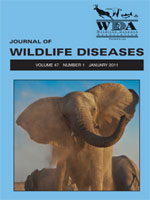Effective measures for controlling chronic wasting disease (CWD), a contagious prion disease of cervids, remain elusive. We review theoretic relationships between predation and host-parasite dynamics and describe a mathematical model to evaluate the potential influence of random removal through harvest or culling and selective predation by wolves (Canis lupus) upon CWD dynamics in deer (Odocoileus spp.) populations. Imposing nonselective mortality representing a 15% annual harvest or cull 51 yr after CWD introduction lowered both deer population size and steady state CWD. Selective (4×) mortality at the same 15% predation rate caused a more modest reduction in deer population size accompanied by a relatively rapid decline in CWD prevalence and elimination of the disease from a closed population. The impacts of selective predation on epidemic dynamics were sensitive to assumptions on parameter estimates; however, within expected ranges, the results of selective predation were consistent and robust. We suggest that as CWD distribution and wolf range overlap in the future, wolf predation may suppress disease emergence or limit prevalence.
How to translate text using browser tools
1 January 2011
THE ROLE OF PREDATION IN DISEASE CONTROL: A COMPARISON OF SELECTIVE AND NONSELECTIVE REMOVAL ON PRION DISEASE DYNAMICS IN DEER
Margaret A. Wild,
N. Thompson Hobbs,
Mark S. Graham,
Michael W. Miller
ACCESS THE FULL ARTICLE

Journal of Wildlife Diseases
Vol. 47 • No. 1
January 2011
Vol. 47 • No. 1
January 2011
Canis lupus
chronic wasting disease
deer
host-parasite
Odocoileus spp.
predator-prey
selective predation




